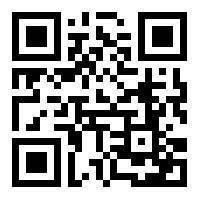Thank you for visiting the AUSTRALIA HP Store
-
Contact Us
CONTACT USCall us
- Sales
- 1300 540 516
- Technical support
- 13 23 47
Exc. pubic holidays
Chat with us- Our specialist are here to help
- Presales Live Product Demo
- Sales
- 61288061500 (WhatsApp)
-

- Post Sales
- 61288061700(WhatsApp)
Exc. pubic holidays
Live product demo
Submit feedback We value your opinion! - My Account
Best HP Scanners for Digital Document Management


As document and data management becomes increasingly digital, having access to a high-quality scanner is becoming more of a consideration. This often overlooked device allows you to easily digitise and store records electronically, cutting down on the amount of paper lying around and making it easier to access and send information as needed.
HP Document Scanner Range Overview
HP offers a range of scanners, including desktop, flatbed, and portable options. Some are designed with home use in mind, while others are aimed more towards businesses. Here are three options that are currently available.
HP ScanJet Enterprise Flow N9120 fn2 Document Scanner


A workhorse designed to meet the daily needs of businesses with high document volumes, the HP ScanJet Enterprise Flow N9120 fn2 is jam-packed with features. It can scan up to 120 pages per minute (ppm) with a recommended daily duty cycle of up to 20,000 pages. Every detail on the page is carefully captured by an ultrasonic sensor, and the resolution can be set to up to 600 dots per inch (dpi).
Scanning multi-page documents is a breeze due to the availability of speedy single-pass duplex scanning. Once the document is scanned, there is a range of file output options, including JPEG, searchable PDF, PNG and HTML. The HP ScanJet Enterprise Flow N9120 fn2 also comes with useful features such as background smoothing, hole fill, straightening content, and auto orient.
The scanner uses an 8-inch touch screen control panel with a full pull-out keyboard. As for its network, it has Ethernet connectivity, USB ports and a hardware integration pocket (HIP).
HP ScanJet Pro 4500 fn1 Network Scanner


The HP ScanJet Pro 4500 fn1 Network Scanner is a great option for small to medium-sized enterprises. It has a recommended daily duty cycle of up to 4,000 pages and can scan 30 ppm. Those 30 pages can be double or single-sided, thanks to the automatic duplex scanning function. The maximum resolution varies depending on which input is used. It can be set to 600 dpi on the automatic document feeder and 1,200 dpi on the flatbed.
One of the main advantages of this scanner is the network capabilities. Users have an instant digital copy of scanned documents available on the network server. Anyone with a PC connected to the network can access the scanner without installing server software. Digitised documents can be saved in a range of formats, including PDF, JPEG, PNG and BMP.
With a compact design, the HP ScanJet Pro 4500 fn1 can easily fit into smaller places around the office. The front panel has a range of controls on it, including Send to Cloud, Email as PDF and Save as JPEG.
HP ScanJet Pro N4000 snw1 Sheet-feed Scanner


A sheet-fed scanner, the HP ScanJet Pro N4000 snw1 is good for people with high-volume scanning needs but don’t require high detail. It scans up to 40 ppm and has a recommended daily duty cycle of 4,000 pages. The resolution is limited to 600 dpi, which is still more than adequate for most scanning needs. Despite its relatively compact size, the automatic document feeder can hold up to 50 pages.
Scanning with the HP ScanJet Pro N4000 snw1 is made simple with its WiFi Direct capabilities. This enables scanning directly from a wireless mobile device without requiring the internet or an active network. It also has Ethernet and USB 3.0 ports.
From the scanner’s 2.8-inch colour control panel, it’s possible to create one-touch custom settings. This means that recurring scan jobs can easily be completed with the press of a single button. Those scans can then be stored in a range of file formats in multiple destinations, including scanning straight to cloud.
Features to consider when choosing a scanner
Here’s a look at some features worth considering when deciding which HP scanner is best for your needs.
High-speed scanning solutions


Similar to printers, the speed of a scanner is measured in pages per minute (ppm) at a set resolution. As an example, the HP ScanJet Pro 3000 s4 can process 40 ppm at a resolution of 300 dpi, regardless of whether the scan is in colour or black and white. Usually, the more detailed the scan is, the longer the scanning process takes, meaning the ppm will decrease.
While the scanning speed doesn’t matter much in a home context, it can make a huge difference for businesses with large document volumes. High speed-scanning capabilities can save time, increasing productivity and efficiency in the workplace. The HP ScanJet Enterprise Flow N9120 fn2 mentioned earlier can handle up to 120 ppm in colour or black and white.
Scanners with automatic two-sided scanning also have an impressions per minute (ipm) rating. Each side of a scanned page is called an impression, so one page can have up to two impressions. Going back to the previous example, since the HP ScanJet Enterprise Flow N9120 fn2 can scan both sides of a page at once, it is capable of up to 240 ipm.
Scan-to-cloud functionality
The storage of documents and media has become increasingly digital, both at home and in the workplace. Cloud-based storage solutions, such as Dropbox and OneDrive, are replacing hard-copy photo albums, document files and external hard drives. This is largely because these platforms are secure, the data is protected, and there are opportunities for simple and instant collaboration between people anywhere in the world.
A scanner with a scan-to-cloud feature to digitise and share documents online can be valuable. Rather than storing the document on a local computer, it’s placed directly into the selected cloud storage file.
Most HP scanners can be connected to compatible cloud storage services, including Dropbox, OneDrive, Google Drive and SharePoint. Once that’s done, it’s a simple matter of selecting it as the destination for the scanned document, with many models having a Send to Cloud option on the front control panel.
Document scanning software
Having a scanner compatible with different software can be a huge convenience. HP scanners come with access to HP Scan software, but some are compatible with external software, including the TWAIN scanner
driver, Kofax VRS Pro document quality control program, and I.R.I.S. Readiris™ Pro OCR, which creates accurate, editable texts.
Duplex scanning for efficiency


Duplex scanning is an essential feature if you need to scan double-sided sheets. It increases efficiency and means that the images from a two-sided document can be collated into a single digital file.
Basic scanners offer this feature through manual duplex scanning. However, when the paper you want scanned is fed, the scanner only copies one side of the document. The document is then flipped over and placed back into the feeder, where the other side is scanned. The inbuilt software automatically sorts and collates the pages into a single digital file. The main disadvantage is the amount of time it takes to complete the duplex scans, which is multiplied if you need to copy a large number of sheets.
The fastest, most efficient way to scan double-sided sheets is using a machine that offers automatic duplex scanning. These scanners have two scanning elements inside that can simultaneously scan both sides of the sheet before collating it into a digital file. Most HP scanners have this capability, including the budget-friendly HP ScanJet Pro 2000 s2 and feature-rich HP ScanJet Pro 4500 fn1.
Optical Character Recognition (OCR) technology
A useful function to have in a scanner, especially in a business context, is OCR technology. It converts scanned documents into searchable, editable files. The HP ScanJet Pro N4000 snw1 and HP ScanJet Enterprise Flow N9120 fn2 are just two scanners from the HP range that come with this feature straight out of the box.
The OCR technology takes the initial scan, converts it to black and white and then processes the image to increase accuracy. The OCR technology then automatically detects characters before converting the recognised text into an editable document.
Summary
Choosing the right scanner can take a little bit of time to start, but it can have a wholly positive impact on scanning efficiency and document management in the long run. It’s a good idea to start by prioritising the features necessary to meet your needs, then check out the HP range to find which options suit your budget.
- Sales
- 1300 540 516
- Technical support
- 13 23 47
Exc. pubic holidays
- Our specialist are here to help
- Presales Live Product Demo
- Sales
- 61288061500 (WhatsApp)
-

- Post Sales
- 61288061700(WhatsApp)
Exc. pubic holidays
Live product demo







